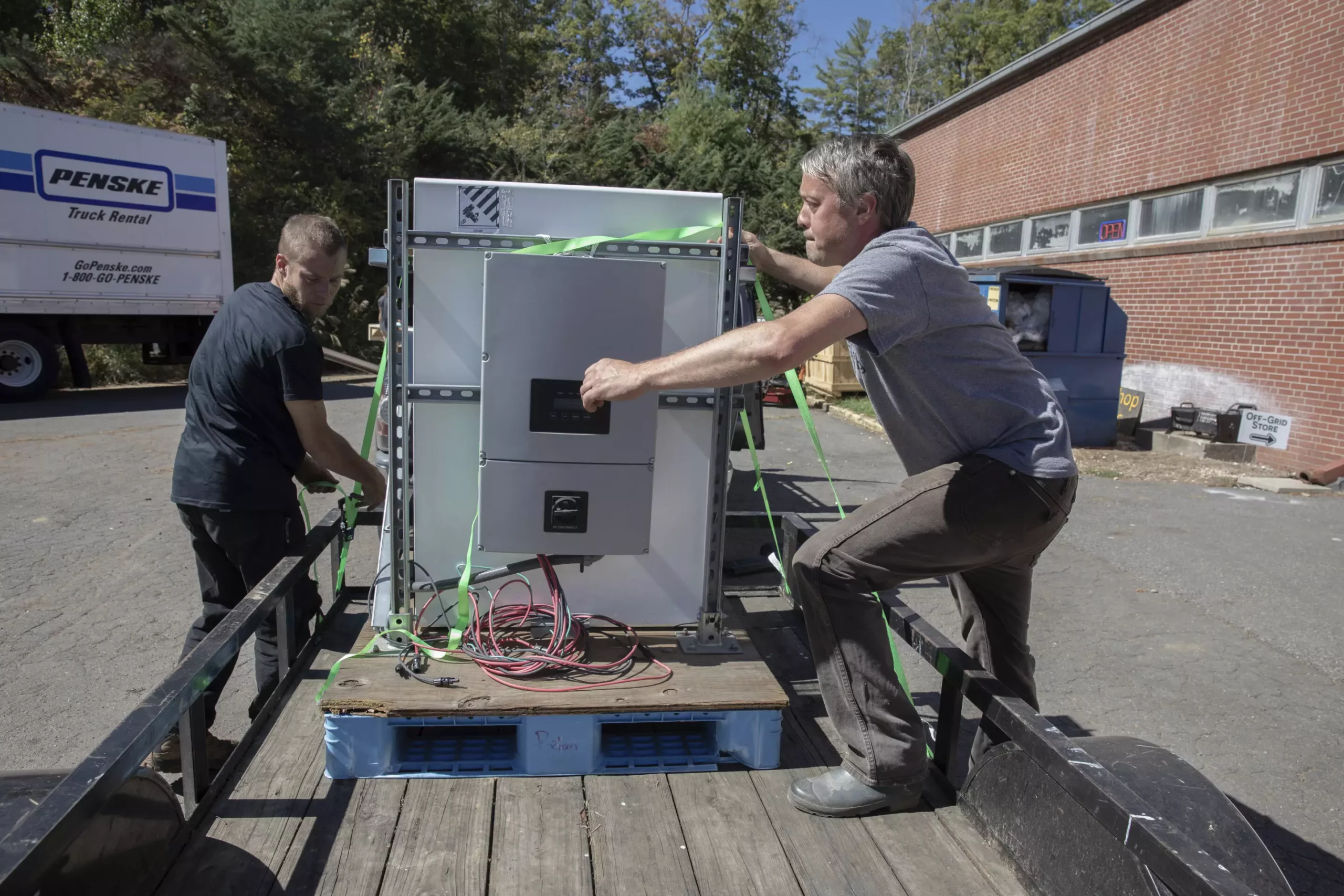In the wake of Hurricane Helene’s relentless sweep through North Carolina, communities are grappling with a daunting reality. This destructive force has left approximately 1.5 million customers without power, with more than 43,000 still facing outages in regions like the western mountains. The landscape that once thrived with natural beauty is now marred with downed power lines, washed-out roads, and a population struggling to regain a semblance of normalcy. The lingering silence of electricity has raised urgent challenges, particularly for vulnerable populations in rural areas, as they desperately seek to navigate their everyday lives.
Bobby Renfro, a retired railroad worker, epitomizes the struggle many face as he operates a community resource hub in Tipton Hill. The noise of a gas-powered generator, although essential, serves as a constant reminder of their dependence on unstable utility sources. Challenges like soaring fuel costs and health implications from toxic fumes complicate survival efforts, amplifying the desperation felt among residents who cannot access basic resources.
Power outages in rural Appalachia threaten more than mere comforts; they endanger lives. The lack of refrigeration for medications, such as insulin, and the inoperability of critical medical devices underscore the urgent need for electricity. Without access to such essentials, individuals are left vulnerable, creating a ticking clock on their health and well-being. Local resilience is stifled by the slow pace of repair efforts—essential restoration and rebuilding must occur before they can transition from survival mode to recovering a lifestyle.
As electric co-operatives and utility crews strive to re-establish power, the inefficiency of relying solely on traditional generators becomes evident. These systems cannot sustain prolonged operations due to hazardous emissions and the expense related to fuel procurement. Residents face a dilemma: endure the noise and health risks or suffer in darkness. As Renfro poignantly states, many residents are marooned, revealing how the disaster has exposed substantial gaps in the reliability of emergency power resources in isolated communities.
In a heartening turn of events, organizations like the Footprint Project are stepping in, introducing solar-powered solutions to fill the critical void left in Hurricane Helene’s wake. Equipped with advance technologies, volunteers have begun deploying solar generators capable of mitigating reliance on harmful gas generators. These portable power sources boast cleaner, quieter operations, thus offering both a reliable and sustainable alternative.
With a clear understanding of immediate needs, the Footprint Project has prioritized mobile infrastructures, hoping to restore a semblance of normalcy for affected communities. The system is not merely about relief; rather, it is a strategic and eco-friendly investment in disaster recovery that significantly enhances the resilience of impacted regions. The introduction of solar generators can facilitate essential medical operations—everything from running refrigerators for medications to providing power for oxygen machines—thereby empowering neighborhoods to remain sustained.
Undoubtedly, the success of initiatives such as the Footprint Project lies in community collaboration. Local volunteers and organizations are rallying behind the cause, supporting not just the distribution of solar technologies but also addressing the diverse needs of residents by setting up essential services in places like community hubs. The story of Julie Wiggins—who turned her driveway into a support center—illustrates how such grassroots efforts can significantly impact communities, boosting morale while providing tangible assistance.
The cooperation among volunteers, local businesses, and nonprofits speaks volumes about the spirit of human resilience during times of adversity. Innovations like Starlink communications systems enable affected individuals to stay informed, aiding in the recovery process that demands more than just power—it requires connection.
While the immediate focus remains on restoring power, it is essential to consider long-term strategies that can enhance community resilience and preparedness for future disasters. The lessons learned from Hurricane Helene are not merely reminders of vulnerability, but catalysts for change in how energy is approached during emergencies. By adopting renewable energy systems and investing in sustainable practices, affected communities may emerge stronger and more self-reliant.
As the Footprint Project continues its mission to assist those in need, they also emphasize the importance of learning from past experiences to ensure long-lasting support for recovery. The message is clear: while one disaster can cripple a community, effective strategies, grounded in collaboration and sustainable technologies, can ignite transformational change.
The aftermath of Hurricane Helene serves as a critical juncture, one where the choices made today can redefine how communities face the uncertainties of tomorrow. Through innovation, collaboration, and a dedicated commitment to sustainability, the path forward can lead to a future that stands resilient and ready for anything.

